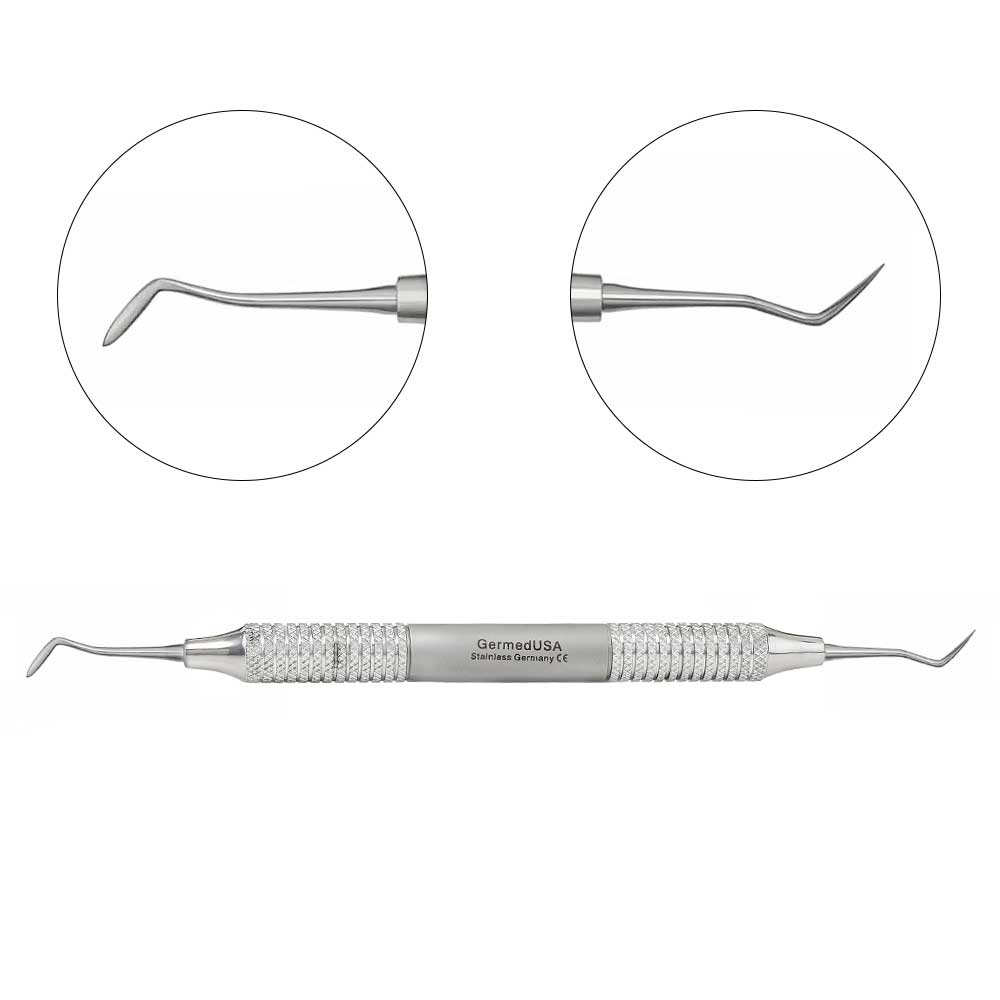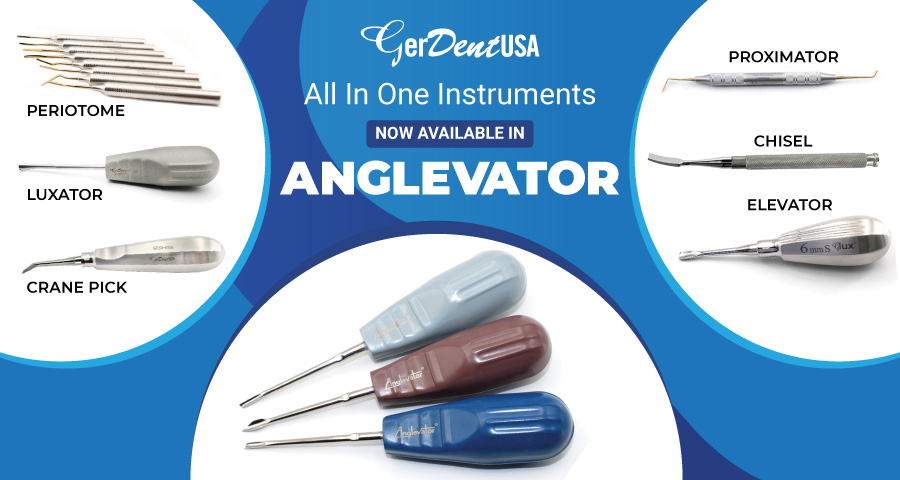In Dentistry, restorative dental treatments are preferred over exodontia. Preservation of the natural anatomy of teeth is more important than extracting the teeth out. Hence, dentists try to restore teeth rather than extracting them out. Restorative dental procedures involve a myriad of instruments. One of these instruments is the Dental carver.
Restorative dental procedures involve filling a decayed tooth with filling material. After filling, the new material has to be carved so the restoration is contoured according to the anatomy of the tooth.
Instrument Design:
Dental carvers have handle, shank, and a blade. Carvers can be double or single-ended. The working end/ blade comes in different designs to aid the operator. The length and diameter of the handles are different for different types of carvers. The outer body of the handle is knurled for better gripping of the dentistry instrument. The handle shape may be hexagonal or octagonal. The handle may be separable from the shank, or it may be continuous with the shank. The shank is that part of the instrument that connects the handle and blade. The shanks may be smooth, round, tapered, or angled. The shanks are made with one or more bends to avoid twisting and turning of the instrument.
Carving instruments are handheld instruments that come in use to contour the surfaces of filling material in their plastic state, waxes, and models.
Grasps for Hand Instruments:
Hand instruments in dentistry are held in different manners for the feasibility of the operator. Most of the operators use different grasps for holding the instrument. These are:
Pen Grasp
The instrument is grasped with a thumb and index finger. The middle finger is below providing support to the instrument. The third and fourth fingers are placed on adjoining teeth. They are used as rests. Middle finger positioning is important for maintaining thrust and preventing the instrument from slipping during manipulation. The advantage of a pen grasp is that it allows more flexibility during movement. Also, it involves less power and it limits potential pressure exertion.
Modified Pen Grasp
The instrument is held between the thumb and forefinger. The pads of thumb, middle finger, and finger contact the instrument. The ring finger acts as a rest and is placed on nearby teeth. The middle finger pads are kept on the top side of the instrument for good control. The base of the index finger and the tip of the middle finger reciprocate, while the thumb is in between them. The palm faces away from the operator. This grasp involves the force from the forearm. The forearm turns inwards and outwards during use. This grasp allows delicacy of touch. This grasp is more effective and it allows controlled power of the instrument.
Inverted Pen Grasp
This grasp has the same finger position as the pen grasp. The only difference is that the palm faces the operator. This grasp is used when maxillary incisors are approached lingually.
After the restoration is placed, it is malleable until it is cured in case of light-cured composites. Hence, the use of carvers is very important to carve out the anatomy of the tooth structure. Carvers have different designs for their working ends to facilitate the operator for the best possible results.
Hollenback Carver:
This is the most used carver in the dentistry. Its function is to contour and carve occlusal and interproximal surfaces of teeth. They are double-ended and made of sharp, stiff material. The ends have sharp points and they come in use to carve different materials, e.g. amalgam, and composite. The Hollenback carver is used with a pull stroke, occlusally from the proximal surfaces of teeth. The carver is placed obliquely along the cavity margins, with the tip resting on the adjacent tooth. The contour of the proximal tooth is used for making the contour of the tooth. All in all, the Hollenback refines the proximal and gingival margins. It also can come in use to refine and deepen the occlusal grooves and anatomy.
All carvers can be used to adjust the height and shape of the marginal ridge, occlusal embrasures, and round up the marginal ridge.
Instrument Maintenance:
Routine inspection of instruments is required to ensure that they are fit for the purpose. Instruments should be checked before surgery to ensure they are in good working condition. Surgical instruments tend to get dull over time. Overuse may also dull the blades. It is advised to not overuse the dentistry instruments and regularly inspect them to make sure they perform well for the operator.
We offer customization of all dentistry instruments. Many practitioners find conventional tools hard to work with. Hence, practicing doctors are encouraged to come up with innovative designs for customization. We offer high-quality products at the most affordable rates. Our products are known for their quality and are trusted by thousands of Dentists. Our experience in the industry has made us the best out there and we want to serve the healthcare market today and in the future.



